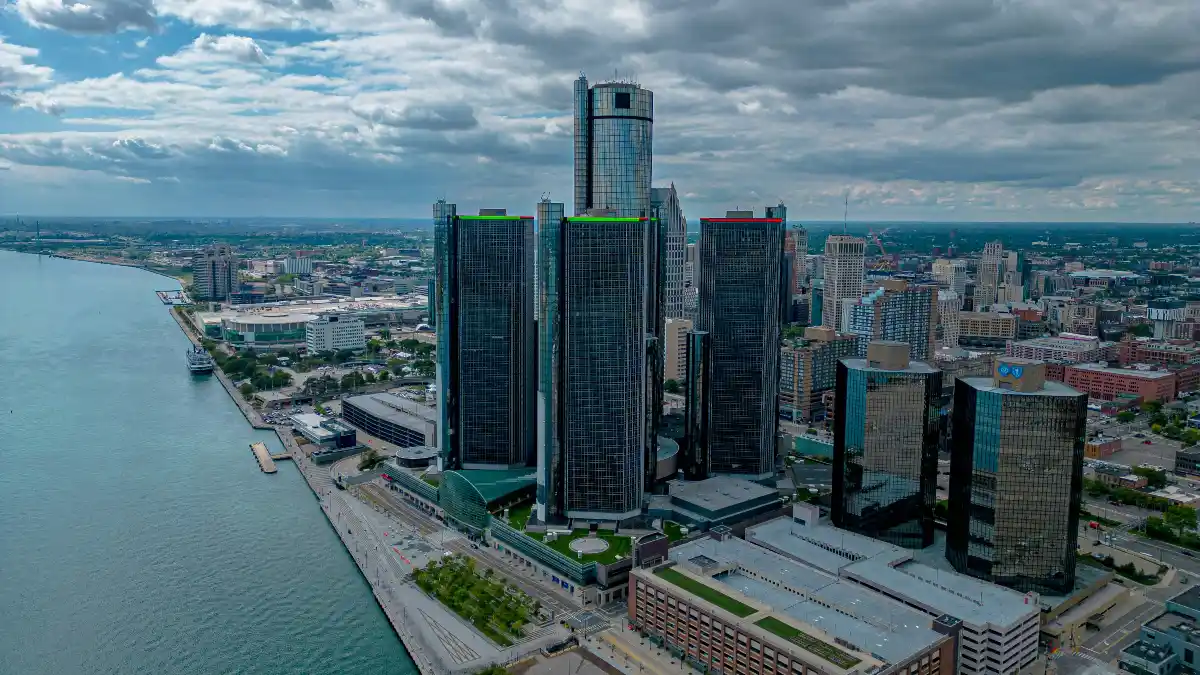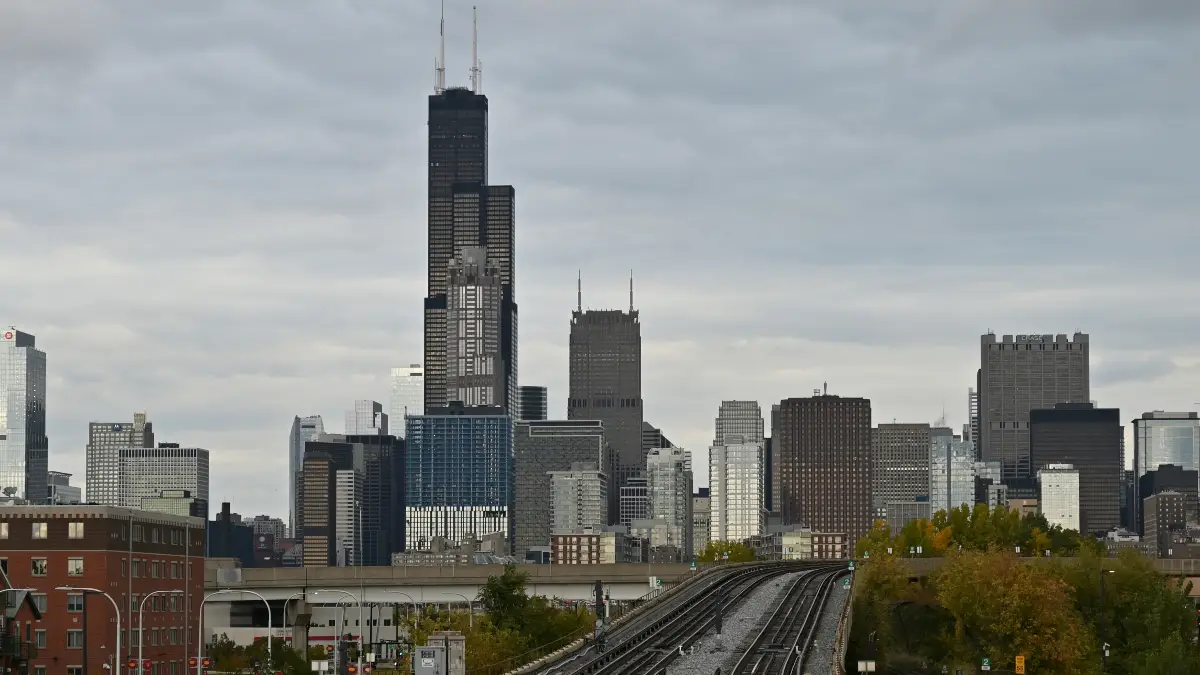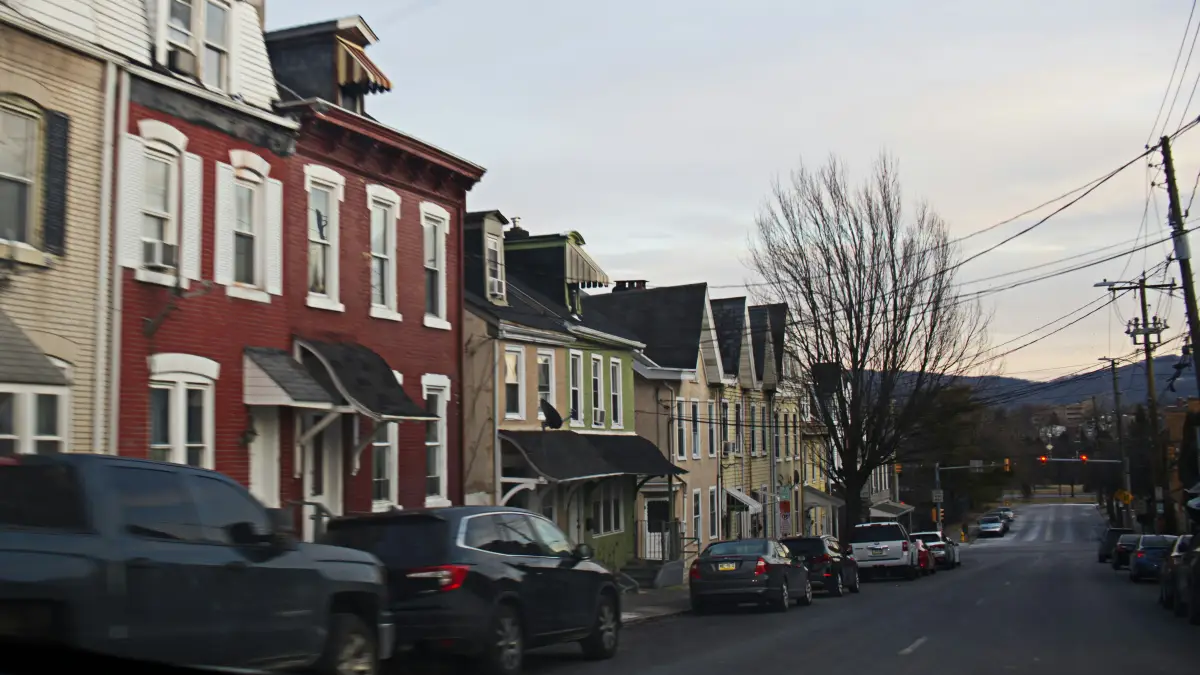The American Dream of homeownership isn’t dead; it just moved. For years, the national headlines have been screaming a single, soul-crushing story: impossible mortgage rates and sky-high prices have locked you out of the market for good.
This narrative of a frozen, unaffordable landscape is true—for some. But it is not the whole story. A great economic decoupling is quietly creating pockets of profound opportunity far from the overheated coastal echo chambers.
This isn’t another doom-and-gloom report cataloging your financial pain. This is a roadmap.
We’ve dissected the data to pinpoint the 10 U.S. cities where the script has officially flipped, making buying the smarter, and often cheaper, choice. It’s time to stop building your landlord’s wealth and start building your own.
The 10 Markets Where Homeownership Makes Financial Sense in 2025
While the national housing narrative is dominated by unaffordability, a granular analysis reveals pockets of opportunity where the financial calculus has shifted decisively.
The following 10 metropolitan areas represent markets where a unique combination of moderate home prices, rising rental costs, and stable local economies has made buying a home a financially superior decision to renting in 2025.
Table 1: 2025 Buy vs. Rent Snapshot: 10 Favorable Markets
| Market (City, State) | Median Home Sale Price | Median Monthly Rent | Est. Monthly Mortgage (PITI) | Monthly Savings from Buying | Price-to-Rent Ratio |
| Pittsburgh, PA | $263,000 | $1,473 | $1,362 | $111 | 16.2 |
| Surprise, AZ | $445,836 | $2,110 | $1,789 | $321 | 19.9 |
| Chicago, IL | $385,000 | $2,253 | $1,758 | $495 | Varies by Neighborhood |
| Memphis, TN | $185,000 | $1,514 | $1,252 | $262 | 18.9 |
| Cleveland, OH | $135,000 | $1,496 | $1,253 | $243 | Favorable |
| Detroit, MI | $115,000 | $1,315 | Varies | Significant | 9.0 |
| Palm Bay, FL | $325,000 | $1,896 | Varies | Positive | Favorable |
| Grand Rapids, MI | $295,433 | $1,752 | $1,773 | -$21 (Near Parity) | Near Parity |
| Philadelphia, PA | $405,000 | $1,770 | Varies | Near Parity | 16.4 |
| Harrisburg, PA | $233,083 | $1,368 | Varies | Favorable | Favorable |
1. Pittsburgh, PA: The Steel City Anomaly, America’s Only Major Metro Where Buying is Cheaper

- Monthly Savings from Buying: $111
- Median Home Sale Price: ~$263,000
- Median Rent (0-2 BR): $1,473
- Price-to-Rent Ratio: 16.2 (Favorable for Buying)
In a stunning divergence from the national trend, Pittsburgh stands as the sole major U.S. metropolitan area where it is demonstrably cheaper to buy a starter home than to rent one.
According to a detailed analysis from Realtor.com, the median monthly cost to purchase a starter home in Pittsburgh, including principal, interest, taxes, and insurance, was $1,362 in mid-2025.
This figure is a full $111 less than the median monthly rent of $1,473 for a comparable property.
This starkly contrasts with the national average, where buying a home costs an additional $908 per month compared to renting, making Pittsburgh a true anomaly in the 2025 housing landscape.
The primary catalyst for this financial flip is not a collapse in home values but a significant and sustained surge in rental prices.
Since 2019, rents in the Pittsburgh area have climbed by nearly 40%, a rate of increase that has substantially outpaced the more moderate 31% rise in home prices over the same period.
This dynamic of “renter fatigue” has made the stability of a fixed-rate mortgage a more attractive and financially prudent option for long-term residents.
The housing market itself is characterized as “resilient” and “blue-chip,” known for steady, non-speculative annual appreciation in the 3% to 5% range, which helps prevent the volatile boom-and-bust cycles seen in other regions.
This housing stability is firmly anchored by Pittsburgh’s robust and recession-proof economy.
The city’s economic base is heavily reliant on its “Eds and Meds” sectors—world-class universities and a sprawling healthcare industry—which provide a consistent and non-cyclical source of employment.
This economic foundation supports housing demand and insulates the market from broader national downturns.
For first-time buyers and risk-averse investors, Pittsburgh presents a rare opportunity to achieve immediate monthly cash flow savings while investing in a market defined by long-term stability.
2. Detroit, MI: The Motor City Turnaround, Where Extreme Affordability Makes Ownership a No-Brainer

- Price-to-Rent Ratio: 9.0 (Extremely Favorable for Buying)
- Median Home Sale Price: ~$79,000 – $115,000
- Median Rent: ~$1,315
- Affordability: Homeownership costs just 15% of local wages
Detroit’s housing market offers one of the most compelling cases for buying over renting in the entire country, driven by a level of affordability that is virtually unmatched in any other major city.
The city’s price-to-rent ratio is an exceptionally low 9.0, falling far below the threshold of 15 that typically signals a strong buy market. While the exact monthly savings can vary, the fundamental value proposition is undeniable.
With median home sale prices ranging from as low as $78,807 to $115,000, the upfront financial barrier to entry is one of the lowest in the nation, making ownership accessible to a broad segment of the population.
The math in Detroit works due to this unparalleled affordability. An analysis by ATTOM found that the costs associated with homeownership consume a mere 15% of the average local wage, one of the most favorable rates in the United States.
This means that for many residents, the financial burden of a mortgage is significantly less than that of renting. Despite these low absolute prices, the market is not stagnant; it is actively appreciating.
Data from mid-2025 shows a robust 18.6% year-over-year increase in the median sale price, indicating that buyers are entering a market with strong upward momentum.
Simultaneously, rents are also rising, with a 3.7% year-over-year increase, further strengthening the financial incentive to lock in a low, fixed mortgage payment today.
This housing opportunity is supported by the city’s ongoing economic revitalization. Projections indicate that Detroit will add an average of 1,500 payroll jobs annually through 2030, with the wage growth for city residents expected to outpace the statewide average.
This solid economic foundation provides the stability needed to support a sustainable homeownership market.
For budget-conscious first-time buyers and real estate investors seeking high cash-flow potential, Detroit represents a unique opportunity to invest in a city with a clear and promising economic turnaround story.
3. Chicago, IL: The Windy City Surprise, A Major Metro Where Buying Can Save You Nearly $500 a Month

- Monthly Savings from Buying: $495
- Median Home Sale Price: ~$385,000
- Median Rent: ~$2,213 – $2,461
- Market Trend: Steady price growth (6.1% YoY)
Defying its reputation as an expensive major city, Chicago has emerged as one of the most advantageous markets for homebuyers in 2025.
A detailed analysis from Empower reveals a striking financial benefit to owning: the estimated monthly mortgage payment on a median-priced home is $1,758, while the median rent is a significantly higher $2,253.
This creates a massive $495 monthly savings for homeowners, ranking Chicago as the top metropolitan area in the study for buyer savings.
This powerful counter-narrative makes a compelling case for re-evaluating the buy-vs-rent decision in the nation’s third-largest city.
The financial equation in Chicago tilts heavily toward buying due to its strong and rising rental market. Average rents in the city are high, with some sources placing the city-wide average above $2,400, and have experienced robust year-over-year growth of 6.7%.
This high and appreciating baseline for rental costs makes a stable, fixed-rate mortgage appear comparatively affordable and predictable. In contrast, the for-sale market is appreciating at a more moderate and sustainable pace.
Home prices were up a healthy 6.1% year-over-year in mid-2025, a rate that supports equity growth without creating the kind of overheated, speculative bubble seen in coastal cities.
Forecasts for the remainder of the year and into 2026 predict continued moderate growth in the 3% to 4% range.
While the broader Illinois economy faces some headwinds, the Chicago metropolitan area remains a vast and diverse economic engine.
Steady job growth in resilient sectors like healthcare, coupled with a rebound in finance and professional services, provides the stable employment base necessary to support a healthy homeownership market.
For young professionals and families planning to establish long-term roots, Chicago offers a rare opportunity to escape a high-cost, competitive rental market and secure the stability and significant monthly savings of owning a home in a world-class city.
4. Cleveland, OH: The North Coast Opportunity, An Undervalued Market Primed for Investment

- Monthly Savings from Buying: $243
- Median Home Sale Price: $135,000
- Median Rent: $1,496
- Price-to-Rent Ratio: Favorable for buying
Cleveland stands out as another Rust Belt gem where the financial data clearly favors buying over renting.
Analysis shows that the estimated monthly mortgage payment is approximately $1,253, which is a significant $243 less than the median rent of $1,496.
This immediate monthly savings, combined with an exceptionally low cost of entry, makes Cleveland one of the most attractive markets for aspiring homeowners and investors in 2025.
The math works in Cleveland due to its high investment potential and strong underlying economic fundamentals.
The city is frequently highlighted as a top market for real estate investors because of its low median purchase price and favorable price-to-rent ratio, which indicate a strong potential for positive cash flow from day one.
With a median sale price of just $135,000—a figure that is still up 8.0% year-over-year—the barrier to entry is remarkably low, allowing buyers to enter the market and begin building equity without needing a massive down payment.
This affordability is not a sign of economic stagnation. On the contrary, Cleveland boasts a surprisingly robust job market.
In the third quarter of 2025, the city was ranked as one of the top 15 hiring hotspots in the nation, a trend driven by its powerhouse healthcare and medical sectors.
Furthermore, Ohio’s leading economic indicators predict continued employment growth for the Cleveland metropolitan area, providing a stable economic backdrop for homeownership.
For first-time investors seeking cash-flowing rental properties or homebuyers looking for extreme affordability in a city with a resilient “Eds and Meds” economy, Cleveland offers a compelling opportunity.
5. Memphis, TN: Soul City Savings, Where Modest Prices and Rising Rents Tip the Scale

- Monthly Savings from Buying: $262
- Median Home Sale Price: $185,000
- Median Rent: $1,514
- Price-to-Rent Ratio: 18.9 (Borderline, but tilting toward buy)
Memphis presents a market that is actively at a tipping point, where the financial advantages are shifting in favor of homeownership.
Buyers in Memphis can expect a monthly savings of approximately $262, with an estimated mortgage payment of $1,252 compared to a median rent of $1,514.
The city’s price-to-rent ratio of 18.9 places it right on the cusp between a balanced and a buy-favorable market, indicating that the window of opportunity to get ahead of the curve is open now.
The primary driver of this shift is the city’s tight and rapidly appreciating rental market. In 2025, one- and two-bedroom apartments have experienced staggering annual rent growth of 9% and 18%, respectively.
This relentless upward pressure on rents makes the prospect of locking in a stable, fixed-rate mortgage payment increasingly attractive.
The for-sale market is also performing strongly, with home prices up 8.8% year-over-year to a still-affordable median of $185,000. This allows new homeowners to secure their housing costs while simultaneously capturing significant equity growth.
Paradoxically, the very affordability challenges that are pushing some residents out of the for-sale market are fueling the demand for rentals, which in turn drives rents higher and strengthens the financial case for those who can afford to buy.
While the local job market has seen a slight contraction, there has been a significant increase in unique job postings, signaling an underlying demand for labor that supports the local economy.
For buyers who can qualify for a mortgage today, Memphis offers a chance to get ahead of escalating rents and build wealth through home value appreciation in a historically affordable Southern hub.
6. Philadelphia, PA: The City of Brotherly Love for Homebuyers, Narrowing the Gap

- Buy-Rent Gap: Among the smallest in the nation
- Renting is More Expensive (in some analyses): One source shows it’s 16.4% more expensive to rent
- Median Home Sale Price: ~$250,000 – $405,000
- Median Rent: ~$1,770
Philadelphia represents a nuanced but compelling case for homeownership in 2025, standing at a clear inflection point where the long-term benefits of buying are beginning to outweigh the short-term costs.
While some analyses show that renting still holds a slight monthly cost advantage, others indicate that renting has already become more expensive.
Crucially, multiple reports consistently place Philadelphia among the top U.S. cities with the smallest financial gap between renting and buying. This convergence of costs signals that the market has reached a tipping point, making it a strategic moment to consider purchasing.
The math in Philadelphia is supported by several key market dynamics. Home prices are appreciating at a moderate and sustainable pace, with forecasts for 2025 projecting a healthy 2.5% to 4.5% increase.
This allows for steady equity growth without the risk of an overheated market. The median sold price for the metro area is approximately $405,000, offering a more accessible entry point than other major Northeastern cities.
The housing inventory remains tight, sitting 46% below pre-pandemic levels, which creates a floor for home values and supports a stable seller’s market, particularly for homes priced under $400,000.
This tight for-sale market, combined with robust local job growth, is fueling strong demand in the rental sector and putting consistent upward pressure on rents.
As rents rise, the financial gap between renting and owning continues to narrow, further strengthening the case for buying.
The local economic outlook is one of cautious optimism, with a growing share of business leaders expecting conditions to improve.
For strategic buyers focused on long-term value, Philadelphia offers a chance to enter a major market just as the financial scales tip decisively in favor of ownership.
7. Grand Rapids, MI: Michigan’s West Coast Winner, Where Buying and Renting are Nearly Identical in Cost

- Buy-to-Rent Ratio: 1% (Essentially a tie)
- Median Home Sale Price: ~$295,000
- Median Rent: $1,614 – $1,752
- Monthly Cost Difference to Buy: +$167 (Near Parity)
Grand Rapids is the quintessential “flipped” market, where the monthly costs of renting and buying have converged to the point of being nearly identical.
One detailed analysis found that the estimated monthly mortgage payment of $1,773 is just 1%—or $21—more than the median monthly rent of $1,752. Another study calculated the premium to buy at a mere $167 per month.
When the monthly costs are this close, the decision becomes clear: the immense long-term financial benefits of homeownership, such as equity building, tax advantages, and protection from future rent hikes, make buying the superior strategic choice.
The financial parity in Grand Rapids is the result of a competitive and healthy housing market.
Homes sell incredibly quickly, with a median of just 7 days on the market, indicating strong and sustained buyer demand that supports property values.
On the other side of the equation, rents have been steadily rising, with a 3.0% year-over-year increase, which makes the stability of a fixed mortgage payment increasingly appealing over time.
This balanced housing market is underpinned by a stable and growing local economy. The West Michigan economy is projected to grow slightly faster in 2025 than it did in 2024, with positive forecasts for both employment and overall sales.
While the broader Michigan state economy is expected to see decelerating growth, the Grand Rapids area continues to demonstrate resilience, making it a reliable location for a long-term investment.
For buyers seeking a vibrant mid-sized city with a high quality of life, Grand Rapids offers a unique opportunity to lock in housing costs at a moment when renting no longer provides any significant monthly financial advantage.
8. Surprise, AZ: Arizona’s Affordable Surprise, A Sun Belt Haven for Homeowners

- Monthly Savings from Buying: $321
- Median Homeowner Cost: $1,789
- Median Renter Cost: $2,110
- Price-to-Rent Ratio: 19.9 (Balanced, leaning to buy)
In the heart of the Sun Belt, Surprise, Arizona, lives up to its name by offering one of the clearest financial advantages to homeowners in the country.
According to a comprehensive study by SmartAsset, homeowners in Surprise enjoy the largest benefit of any city analyzed, paying a median monthly housing cost of $1,789 compared to the median renter’s cost of $2,110. This results in a substantial $321 in monthly savings for those who own their home.
The financial logic in Surprise is driven by the relatively high cost of renting when compared to the area’s moderate home values.
The median home value is approximately $445,000, an accessible price point for a thriving Sun Belt community. The tight rental market has pushed rents to a level where a mortgage payment becomes the more economical choice.
The city’s price-to-rent ratio of 19.9 places it in the balanced zone, but the significant monthly savings clearly indicate that the scale has tipped in favor of buying.
While utility costs in the region are higher than the national average, overall housing costs in Surprise are 7% cheaper, contributing to a favorable financial picture for residents.
This local opportunity is set against the backdrop of a broader Arizona economy that, despite near-term slowdowns, is forecast for continued long-term growth that outpaces the U.S. average.
For families and retirees seeking a Sun Belt lifestyle, Surprise offers a market where the data unequivocally shows that owning a home is significantly cheaper per month than renting.
9. Palm Bay, FL: Florida’s Space Coast Steal, An Affordable Entry into the Sunshine State

- Status: Identified as a city where it is cheaper to own than rent
- Median Home Sale Price: $325,000
- Median Rent: $1,896
- First-Time Homebuyer Rank: Top 10 in the U.S.
Palm Bay, located on Florida’s famed Space Coast, has emerged as a prime destination for aspiring homeowners, particularly those who have been priced out of the state’s more expensive metropolitan areas.
While a precise monthly savings figure is not available from the same source as other cities on this list, Palm Bay is explicitly identified by SmartAsset as one of only 17 cities in its study where the cost of owning is cheaper than the cost of renting.
This distinction, combined with its ranking as a top-10 market in the nation for first-time homebuyers, builds an exceptionally strong case for purchasing a home here in 2025.
The math works in Palm Bay primarily due to its relative affordability within the high-demand Florida market.
With a median sale price of $325,000, homes in Palm Bay are significantly more accessible than the Florida state median of over $410,000. This provides a crucial entry point for buyers into the sought-after Sunshine State lifestyle.
The local market is described as “balanced,” with a healthy 6.8 months of housing supply available. This is a key advantage for buyers, as it eases the intense competition seen in other Florida cities and provides more room for negotiation.
The opportunity in Palm Bay is supported by a diverse local economy. The Palm Bay-Melbourne-Titusville metropolitan area features strong employment in the manufacturing and education and health services sectors, providing a stable job base to support the housing market.
For first-time homebuyers and individuals looking to relocate to Florida, Palm Bay offers a location where homeownership is not just a dream, but the more financially prudent and achievable choice.
10. Harrisburg, PA: The Capital Opportunity, America’s #1 City for First-Time Homebuyers

- First-Time Homebuyer Rank: #1 in the U.S.
- Median Home Sale Price: $233,083
- Median Rent: $1,368
- Affordability: Homeownership costs are well below the 30% income threshold
Harrisburg’s position on this list is cemented by its status as the single best market in the United States for first-time homebuyers in 2025, according to a comprehensive ranking by Realtor.com.
While not based on a direct monthly savings calculation, this top ranking is the result of a holistic analysis confirming that the financial “math works” for new buyers.
The ranking considers a combination of housing affordability, a high share of young residents, and access to strong job markets, making a powerful, data-backed argument for choosing to buy in Pennsylvania’s capital city.
The case for buying in Harrisburg is built on a foundation of extreme affordability and a healthy market.
The median home sale price is an accessible $233,000, a figure well below the national median, and the associated monthly cost of ownership is comfortably within the affordability threshold (less than 30% of income) for a household earning the local median income.
The market is active and appreciating, with homes going under contract in just 8 days and values rising by 4.9% year-over-year. Meanwhile, rents are also rising quickly (up 6.1% YoY), which steadily increases the relative appeal of securing a fixed mortgage payment.
This attractive housing market is supported by the economic stability inherent in a state capital. A large government employment base provides a consistent economic anchor for the region.
Broader economic data for the metropolitan area shows steady, if modest, job growth across various sectors, ensuring a reliable employment landscape.
For first-time homebuyers, particularly young professionals and families, Harrisburg offers an unparalleled combination of affordability, economic stability, and strong community fundamentals, making it a market where one can confidently and prudently enter the world of homeownership.

